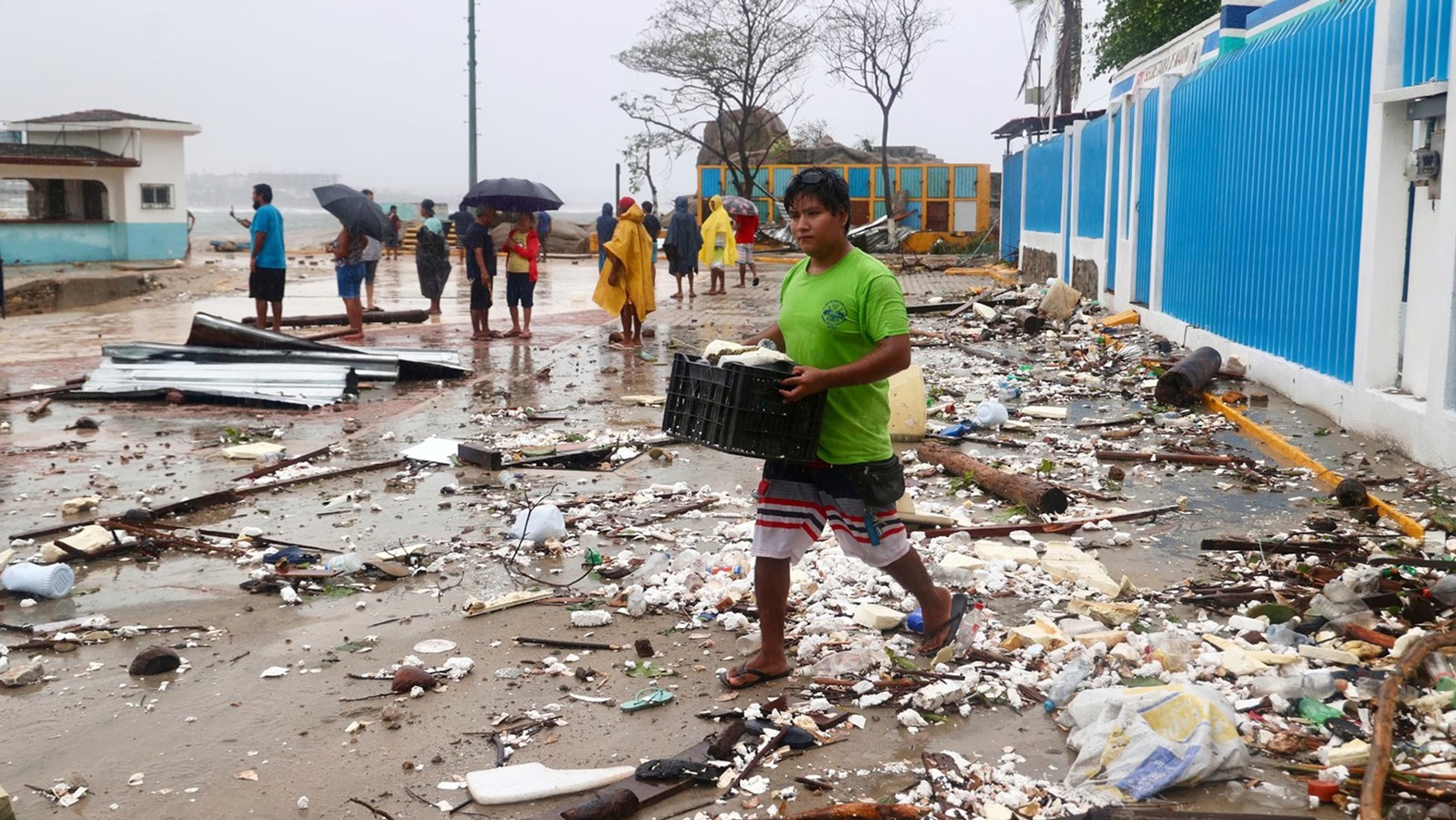Hurricane Erick made a powerful impact on Mexico’s southern Pacific Coast after making landfall on 19 June as a Category 3 storm. Cleanup operations have now begun in affected areas, particularly in Oaxaca and Guerrero, which bore the brunt of the hurricane’s wind and rain.
Rapid Intensification and Landfall
Hurricane Erick rapidly strengthened on 18 June, evolving from a tropical storm into a Category 3 hurricane, with maximum sustained winds between 112 and 130 mph. By early 19 June, the storm intensified further into a Category 4 hurricane (130 to 156 mph), before making landfall about 20 miles east of Punta Maldonado.
This marks Hurricane Erick as the first hurricane to make landfall in Mexico during the current season, which runs from May through November. The 2025 hurricane season is forecast to be above average, with predictions of 8 to 11 hurricanes, including 4 to 6 that could reach major hurricane status.
Damage and Immediate Impact
A hurricane warning was in effect from Acapulco to Puerto Ángel, urging final safety preparations. On 18 June, Salina Cruz, a key seaport in Oaxaca, experienced flooding due to the hurricane’s approach.
In Puerto Escondido, a popular tourist town, Hurricane Erick led to power and communication disruptions, flooding of streets, and infrastructure damage. As of 19 June, no fatalities or injuries have been reported.
Ongoing Risks and Meteorological Outlook
After landfall, Hurricane Erick weakened to a Category 1 storm (winds of 75-95 mph), but still posed threats of flooding and strong winds as it continued moving inland.
The National Hurricane Center (NHC) forecast rainfall of up to eight inches in Guerrero, and up to four inches in Oaxaca and Michoacán. There remains a risk of flash floods and mudslides, especially in mountainous regions as the hurricane begins to dissipate.
Travel and Infrastructure Disruptions
As Hurricane Erick moves across southern Mexico, it is expected to deteriorate and dissipate by 20 June. However, heavy rainfall and service disruptions are likely to persist in the short term.
Authorities and organizations have been advised to monitor local developments closely. Travel disruptions, including flight delays, cancellations, and road closures, are anticipated. Utility infrastructure may also suffer damage, causing interruptions to essential services.
Hurricane Erick has emerged as a significant event in the early stages of Mexico’s 2025 hurricane season. Its fast intensification, combined with its impact on coastal infrastructure and services, underscores the need for continued preparedness as the season progresses.
MitKat’s AI-powered risk intelligence platform, 𝐝𝐚𝐭𝐚𝐬𝐮𝐫𝐟𝐫 continuously monitors global risk events. Stay tuned for more updates.






